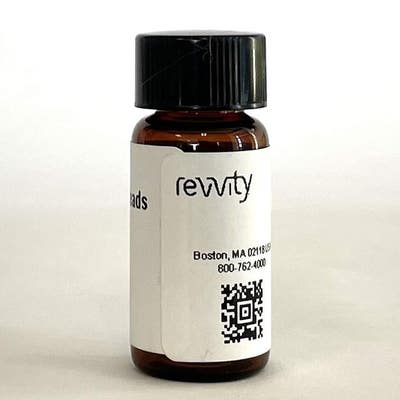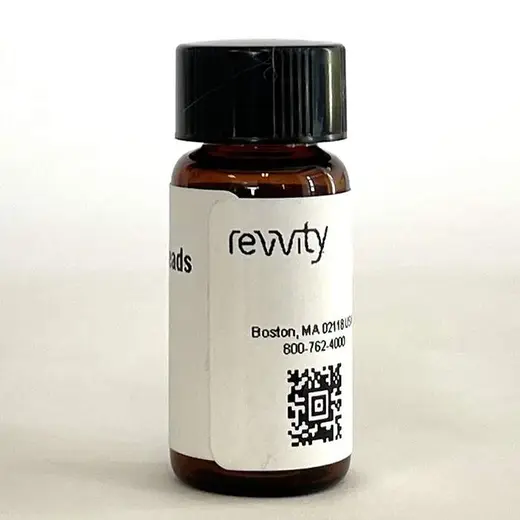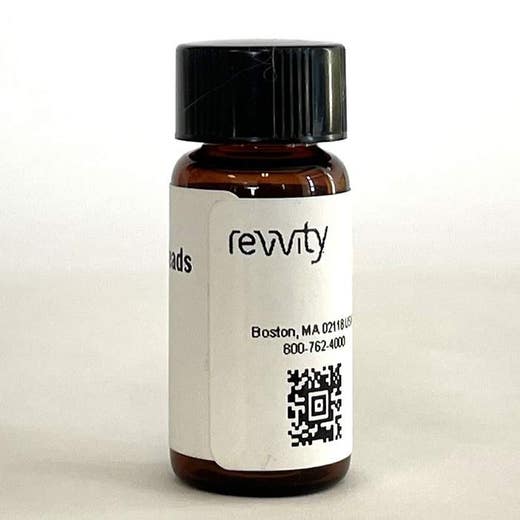
WGA-PEI TYPE A PS SPA Beads, 50 mg

WGA-PEI TYPE A PS SPA Beads, 50 mg




WGA-coated SPA beads, for capturing cell membranes in proximity-based scintillation assays.
| Feature | Specification |
|---|---|
| Surface Treatment |
PEI WGA |
WGA-coated SPA beads, for capturing cell membranes in proximity-based scintillation assays.


WGA-PEI TYPE A PS SPA Beads, 50 mg


WGA-PEI TYPE A PS SPA Beads, 50 mg


Product information
Overview
WGA-coated SPA beads, for capturing cell membranes in proximity-based scintillation assays. 50 mg quantity.
The treatment of WGA SPA beads with positively charged polyethyleneimine (PEI) blocks potential non-specific binding sites on the SPA bead surface. There are two SPA bead types available with PEI treatment. The WGA-PEI type A SPA beads are treated with PEI prior to the coupling of WGA to the SPA bead. The WGA PEI type B SPA beads are treated with PEI after the WGA coupling stage. The WGA-PEI type A and type B SPA beads exhibit different characteristics with regard to the non-specific binding of radiolabelled ligand directly to the SPA bead. Therefore, both bead types should be evaluated when deciding which SPA bead to use and both are included in the Select-a-Bead Kit. The binding capacity of both bead types for cell membrane protein remains 10–30 μg membrane protein per milligram of SPA bead.
SPA Imaging beads are microspheres containing scintillant which emit light in the red region of the visible spectrum. As a result, these beads are ideally suited to use with a CCD imager, such as Revvity's Viewlux™ CCD Imager.
Two types of core SPA Imaging bead are available - yttrium oxide (YOx) and Polystyrene (PS). A number of biological coatings also exist for each core bead type to enable receptor binding, enzyme, molecular interaction and radioimmunoassays to be investigated.
Scintillation proximity assay (SPA) is a homogeneous and versatile technology for the rapid and sensitive assay of a wide range of biological processes, including applications using enzyme and receptor targets, radioimmunoassays, and molecular interactions. When 3H, 14C, 33P, and 125I radioisotopes decay, they release β-particles (or Auger electrons, in the case of 125I). The distance these particles travel through an aqueous solution is dependent on the energy of the particle. If a radioactive molecule is held in close enough proximity to a SPA Scintillation Bead or a SPA Imaging Bead, the decay particles stimulate the scintillant within the bead to emit light, which is then detected in a PMT-based scintillation counter or on a CCD-based imager, respectively. However, if the radioactive molecule does not associate with the SPA bead, the decay particles will not have sufficient energy to reach the bead and no light will be emitted. This discrimination of binding by proximity means that no physical separation of bound and free radiochemical is required.
Specifications
| Application |
Drug Discovery & Development
|
|---|---|
| Automation Compatible |
Yes
|
| Bead Type or Material |
Polystyrene (PS)
|
| Brand |
SPA Imaging Beads
|
| Detection Modality |
Radiometric
|
| Format |
Microplates
Tubes
|
| Shipping Conditions |
Shipped in Blue Ice
|
| Surface Treatment |
PEI
WGA
|
| Technology |
Scintillation Proximity Assay
|
| Unit Size |
50 mg
|
Resources
Are you looking for resources, click on the resource type to explore further.
Scintillation proximity assay has been successfully applied to receptor binding assays
Loading...


How can we help you?
We are here to answer your questions.






























